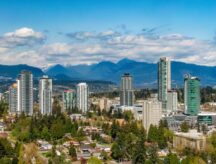Quebec fell even further behind the rest of Canada in attracting immigrants in 2019
Pour lire cet article en français, cliquez ici.
Quebec has fallen even further behind the rest of Canada in attracting immigrants, as the province’s government kept its promise to cut immigration by 21 per cent in 2019.
According to data from Immigration, Refugees and Citizenship Canada (IRCC), Quebec welcomed about 40,600 immigrants in 2019 compared to 51,100 the previous year.
Economic and family class admissions dropped by 20 per cent each while refugee class admissions dropped by 17 per cent.
Overall, these figures represent the lowest admissions of permanent residents to the province since 2015. Upon winning power in October 2018, Premier François Legault’s government vowed to reduce immigration.
The government said the reduction was necessary to ensure new arrivals are properly integrated into Quebec’s majority French-speaking society and its labour market.
Find out if you are eligible for any Canadian immigration programs
Quebec bucks the national trend
Quebec’s decision to reduce immigration stands in stark contrast to the rest of Canada. At the national level, Canada increased its immigrant intake by 6 per cent to 341,000 in 2019.
Each of the four provinces in Atlantic Canada—Newfoundland and Labrador, Prince Edward Island, New Brunswick, and Nova Scotia—enjoyed a growth rate of at least 15 per cent compared with 2018.
Ontario (12 per cent), Manitoba (24 per cent), Saskatchewan (2 per cent), Alberta (4 per cent), and British Columbia (12 per cent), and Yukon (31 per cent) also saw their immigrant admissions rise.
Immigration across Canada should continue to grow moving forward as the federal government targets higher levels of admissions under its 2019-2021 Immigration Levels Plan.
21 per cent decline in immigration comes at a bad time
Quebec has one of the oldest populations in Canada and its birth rate is just as low as the national average. Hence, the province actually needs significantly higher levels of immigration to support its economy.
If it sustains low levels of immigration moving forward, Quebec will constrain its economic growth potential.
In addition, it may become a less attractive destination for businesses to invest in. The private sector needs access to enough workers and consumers for it to invest in a jurisdiction. However, if Quebec keeps its immigration levels low, while other provinces such as Ontario are enjoying higher economic growth rates in large part due to immigration, then the private sector may opt to invest elsewhere.
Quebec would need to double its immigration intake to over 80,000 newcomers annually in order to keep pace with Canada’s newcomer intake on a per capita basis (0.9 per cent).
Following its significant reduction in 2019, Quebec now has the second-lowest per capita intake among Canada’s ten provinces, as it welcomed just 0.5 per cent of its population in newcomers, only ranking ahead of Newfoundland and Labrador (which had a per capita intake of 0.4 per cent).
Quebec plans to raise immigration thresholds in 2020
In October 2019, the Quebec government announced in its immigration plan that it would target up to 44,500 newcomers in 2020. The rationale for the higher target is to help alleviate labour shortages in the province.
In order to tackle the labour shortages, business groups such as The Chamber of Commerce of Metropolitan Montreal and the Quebec Council of Employers have been advocating for the government to increase immigration to 60,000 per year.
While 60,000 remains a far cry from the immigration levels that the province actually needs to sustain healthy levels of economic growth moving forward, it would still represent a significant improvement from the province’s current target.
Quebec currently has the second-lowest unemployment rate among all Canadian provinces, and its unemployment rate is historically low. It currently stands at 5.1 per cent, behind only British Columbia’s unemployment rate of 4.5 per cent. This is a strong indicator that Quebec can benefit from more labour—including by tapping into under-utilized sources of talent within Quebec such as persons with disabilities, as well as attracting more Canadians and immigrants to the province.
For now, Quebec remains open to immigrants who wish to move there, but space is limited.
In 2020, nearly 60 per cent of the potential 44,500 new immigrants that could be admitted by the province are expected to come through economic immigration programs, such as the Quebec Skilled Worker Program and the Quebec Experience Program.
Find out if you are eligible for any Canadian immigration programs
© 2020 CIC News All Rights Reserved
- Do you need Canadian immigration assistance? Contact the Contact Cohen Immigration Law firm by completing our form
- Send us your feedback or your non-legal assistance questions by emailing us at media@canadavisa.com







